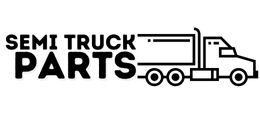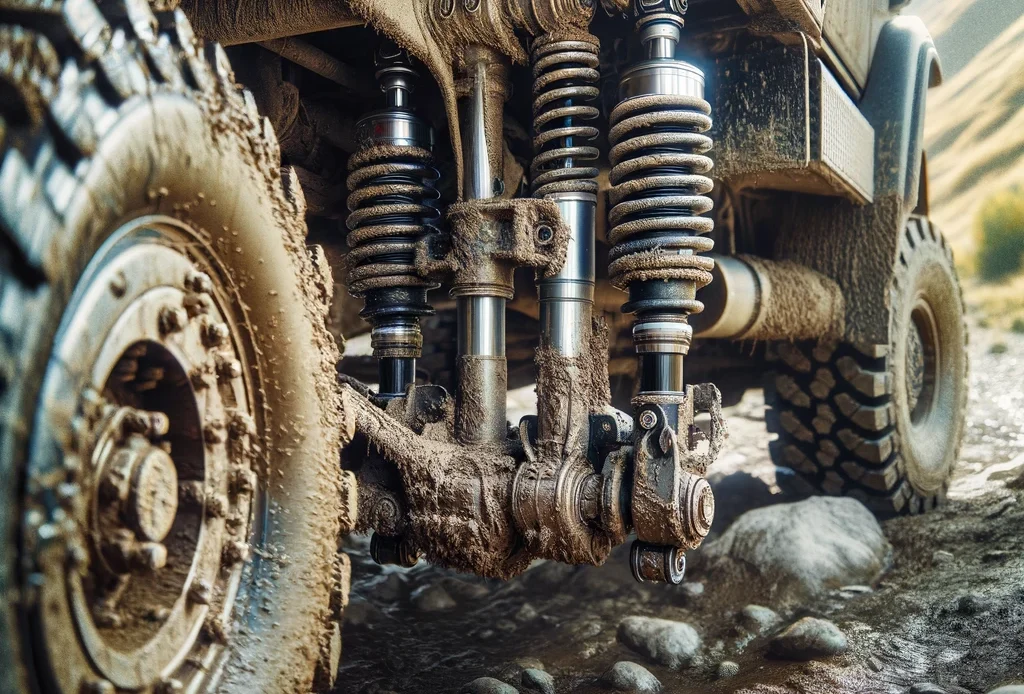Mastering Shock Absorber Replacement A Comprehensive Guide for Heavy-Duty Truck Owners
Introduction to Shock Absorber Replacement for Heavy-Duty Trucks
In the bustling world of heavy-duty trucks, where every mile counts, the role of shock absorbers is paramount. These unsung heroes of the road play a crucial role in maintaining stability, ensuring control, and cushioning the vehicle from the bumps and jolts of the journey.
In this introductory chapter, we embark on a journey to understand the significance of shock absorbers in heavy-duty trucks. Imagine your truck navigating through rugged terrains, carrying hefty loads, or maneuvering through challenging weather conditions. Now, envision it doing all this smoothly, thanks to its reliable shock absorbers.
However, shock absorbers are not invincible; they undergo wear and tear over time, necessitating replacement. This chapter sets the stage for understanding why timely replacement is not just advisable but imperative for the safety and performance of your heavy-duty truck.
We’ll explore the intricacies of shock absorbers, dissecting their mechanism and explaining how they function to enhance your truck’s handling and ride comfort. Moreover, we’ll highlight the warning signs indicating when your truck’s shock absorbers are due for replacement, ensuring you stay proactive in maintaining your vehicle’s health and safety.
So, fasten your seatbelt as we delve into the world of shock absorber replacement for heavy-duty trucks, where safety, stability, and performance converge to keep your journey smooth and steady.
Signs Your Truck’s Shock Absorbers Need Replacement
Your heavy-duty truck relies on various components to keep it rolling smoothly, and among the most crucial are its shock absorbers. But how do you know when these vital components are reaching the end of their lifespan? In this chapter, we’ll explore the telltale signs that indicate your truck’s shock absorbers are due for replacement.
-
Excessive Bouncing
: Does your truck bounce excessively after hitting bumps or uneven road surfaces? This could be a sign that your shock absorbers are no longer effectively dampening the vehicle’s movements.
- Uneven Tire Wear: Keep an eye on your truck’s tire wear patterns. Uneven wear, particularly cupping or scalloping, can indicate worn-out shock absorbers. This uneven tire wear not only compromises traction but also shortens tire lifespan.
- Reduced Braking Effectiveness: Shock absorbers play a crucial role in maintaining tire contact with the road surface during braking. If you notice increased stopping distances or a loss of stability under braking, it could be due to worn shock absorbers.
- Vehicle Nose Dives or Squats: During acceleration or braking, does your truck’s front end dive forward or rear end squat excessively? These movements indicate that the shock absorbers are no longer effectively controlling weight transfer.
- Fluid Leaks: Visible fluid leaks on the shock absorbers are a clear sign of internal seal failure and indicate the need for replacement.
By recognizing these signs early on, you can address shock absorber issues before they compromise your truck’s safety and performance. In the next chapter, we’ll delve into the process of selecting the right shock absorbers for your heavy-duty truck.
Choosing the Right Shock Absorbers for Your Truck
Selecting the appropriate shock absorbers for your heavy-duty truck is crucial for ensuring optimal performance, safety, and comfort. In this chapter, we’ll guide you through the process of choosing the right shock absorbers tailored to your truck’s specific needs and requirements.
-
Consider Your Truck’s Specifications
: Start by considering your truck’s specifications, including its make, model, and weight capacity. Heavy-duty trucks come in various sizes and configurations, and selecting shock absorbers that are compatible with your truck’s specifications is essential for optimal performance.
- Evaluate Your Driving Conditions: Take into account the typical driving conditions your truck encounters. Are you primarily driving on smooth highways, rough off-road terrain, or a combination of both? Different shock absorbers are designed to excel in specific driving conditions, so choose accordingly.
- Understand Shock Absorber Types: Familiarize yourself with the different types of shock absorbers available for heavy-duty trucks. Common types include hydraulic, gas-filled, and adjustable shocks. Each type offers unique advantages in terms of performance and adjustability, so choose based on your preferences and driving needs.
- Consider Load Capacity: Ensure that the shock absorbers you choose can handle the weight and load capacity of your truck, especially if you frequently haul heavy loads or tow trailers. Opt for shocks specifically designed for heavy-duty applications to maintain stability and control under load.
- Research Brands and Reviews: Research reputable shock absorber brands and read customer reviews to gauge the reliability, durability, and performance of different products. Quality shock absorbers from trusted brands are more likely to deliver consistent performance and longevity.
By carefully considering these factors and conducting thorough research, you can confidently select the right shock absorbers that will enhance your heavy-duty truck’s performance and ensure a smooth and comfortable ride. In the next chapter, we’ll delve into the tools and equipment needed for shock absorber replacement.
Tools and Equipment Needed for Replacement
Before embarking on the task of replacing your heavy-duty truck’s shock absorbers, it’s essential to ensure you have the necessary tools and equipment at your disposal. In this chapter, we’ll provide a comprehensive list of tools and equipment required to perform a successful shock absorber replacement.
-
Basic Hand Tools
: Start by gathering basic hand tools such as wrenches, sockets, ratchets, and screwdrivers. These tools will be used for tasks such as removing bolts, nuts, and other fasteners.
- Jack and Jack Stands: A sturdy hydraulic jack and a set of jack stands are indispensable for safely lifting and supporting your truck during the replacement process. Ensure that the jack and jack stands are rated for the weight of your heavy-duty truck.
- Wheel Chocks: Wheel chocks are essential for preventing the truck from rolling while it’s lifted on the jack stands. Place wheel chocks securely against the tires on the opposite end of the truck being lifted.
- Torque Wrench: A torque wrench is necessary for tightening bolts and nuts to the manufacturer’s specified torque settings. Proper torque ensures that components are securely fastened without the risk of over-tightening.
- Spring Compressor (if applicable): In some cases, you may need a spring compressor to safely compress coil springs when removing or installing shock absorbers. This tool helps prevent the spring from suddenly releasing tension, which could cause injury.
- Safety Gear: Don’t forget to prioritize safety by wearing appropriate safety gear such as gloves and safety glasses. Working on heavy-duty trucks can be physically demanding and potentially hazardous, so protect yourself accordingly.
- Penetrating Oil: Penetrating oil can be helpful for loosening rusted or stubborn bolts and nuts, making them easier to remove without causing damage.
By gathering these essential tools and equipment before starting the shock absorber replacement process, you’ll be well-prepared to tackle the task efficiently and safely. In the next chapter, we’ll discuss the importance of preparing your truck for shock absorber replacement.
Preparing Your Truck for Shock Absorber Replacement
Proper preparation is the cornerstone of a successful shock absorber replacement for your heavy-duty truck. In this chapter, we’ll outline essential steps to ensure your truck is ready for the replacement process, setting the stage for a smooth and efficient operation.
-
Secure the Vehicle
: Park your truck on a level surface and engage the parking brake to prevent it from rolling during the replacement process. Additionally, consider placing wheel chocks behind the wheels to further secure the vehicle.
- Lift the Truck: Use a hydraulic jack to lift the truck’s chassis, ensuring it is lifted safely and securely. Position the jack according to the manufacturer’s recommendations, typically beneath the frame or designated lifting points.
- Support with Jack Stands: Once the truck is lifted to the desired height, place sturdy jack stands beneath the frame or axle to support the weight of the vehicle. Double-check that the jack stands are positioned securely and are rated for the truck’s weight.
- Remove the Wheels: With the truck safely lifted and supported, remove the wheels using a lug wrench or impact wrench. Set the wheels aside in a safe location, as you’ll need access to the suspension components for shock absorber replacement.
- Inspect Suspension Components: While the wheels are off, take the opportunity to inspect other suspension components such as control arms, bushings, and ball joints for signs of wear or damage. Address any issues as needed to ensure optimal suspension performance.
- Clean the Work Area: Before beginning the replacement process, clean the work area to remove dirt, debris, and any potential hazards that could impede progress or cause injury during the installation.
By meticulously preparing your truck for shock absorber replacement, you’ll create a safe and conducive environment for the task ahead. In the next chapter, we’ll delve into a step-by-step guide for removing and replacing your truck’s shock absorbers.
Step-by-Step Guide to Replacing Shock Absorbers
Embarking on the journey of shock absorber replacement for your heavy-duty truck requires a methodical approach to ensure a successful outcome. In this chapter, we’ll provide a detailed, step-by-step guide to removing the old shock absorbers and installing new ones, guiding you through each stage of the process with clarity and precision.
-
Disconnecting the Old Shock Absorbers
: Start by locating the upper and lower mounting points of the old shock absorbers. Use appropriate tools to loosen and remove the bolts securing the shocks to the suspension components. Depending on your truck’s configuration, you may need to remove additional components such as sway bars or brake lines to access the shocks.
- Removing the Old Shocks: Once the mounting bolts are removed, carefully extract the old shock absorbers from their mounting points. Be prepared for residual fluid or debris to drain from the shocks as you remove them.
- Inspecting Mounting Hardware: Take a moment to inspect the mounting hardware and bushings for wear or damage. Replace any worn or damaged components to ensure proper fitment and performance of the new shock absorbers.
- Installing the New Shocks: Align the new shock absorbers with their respective mounting points and secure them in place using the provided hardware. Tighten the mounting bolts to the manufacturer’s specified torque settings to ensure proper installation.
- Reconnecting Additional Components: If any additional components were removed to access the shocks, such as sway bars or brake lines, reattach them securely according to the manufacturer’s guidelines.
- Double-Checking Installation: Once the new shocks are installed and all components are reconnected, double-check the tightness of all bolts and connections to ensure everything is properly secured.
- Reinstalling the Wheels: With the new shock absorbers in place and all components securely fastened, reinstall the wheels onto the truck using a lug wrench or impact wrench. Tighten the lug nuts to the manufacturer’s specified torque settings.
By following this step-by-step guide, you’ll be able to replace the shock absorbers on your heavy-duty truck with confidence and precision, restoring optimal performance and ride comfort to your vehicle. In the next chapter, we’ll discuss the importance of testing and adjusting the new shock absorbers after installation.
Testing and Adjusting the New Shock Absorbers
After installing new shock absorbers on your heavy-duty truck, it’s essential to test their performance and make any necessary adjustments to ensure optimal functionality. In this chapter, we’ll explore the importance of testing and provide guidance on how to assess the effectiveness of your new shock absorbers.
-
Test Drive
: Take your truck for a test drive on a variety of road surfaces, including smooth pavement, rough terrain, and highway speeds. Pay close attention to how the truck handles bumps, dips, and turns, noting any changes in ride comfort and stability.
- Evaluate Ride Quality: Assess the overall ride quality of your truck with the new shock absorbers installed. Does the truck feel smoother and more stable compared to before? Notice any reduction in excessive bouncing or body roll, indicating improved shock absorber performance.
- Check for Abnormal Noise or Vibration: Listen for any unusual noises or vibrations coming from the suspension system during the test drive. These could be signs of improper installation, misalignment, or other underlying issues that require attention.
- Inspect for Fluid Leaks: After the test drive, inspect the new shock absorbers for any signs of fluid leaks or seepage. Fluid leaks indicate a potential seal failure and can compromise the effectiveness of the shock absorbers.
- Adjustment Options (if applicable): If your new shock absorbers are adjustable, consider experimenting with different settings to fine-tune the ride quality and handling characteristics of your truck. Consult the manufacturer’s guidelines for recommended adjustment procedures and settings.
- Alignment and Suspension Check: Following shock absorber replacement, it’s advisable to have your truck’s alignment and suspension system checked by a professional technician. Proper alignment and suspension geometry are essential for maintaining vehicle stability, tire wear, and overall handling performance.
- Final Inspection: Conduct a final visual inspection of the shock absorbers, ensuring that all mounting bolts and connections are securely tightened. Address any issues or concerns identified during the test drive or inspection process.
By thoroughly testing and evaluating the performance of your new shock absorbers, you can ensure they are functioning as intended and provide the desired improvements in ride comfort, stability, and handling. In the final chapter, we’ll share maintenance tips to prolong the lifespan of your truck’s shock absorbers and maximize their effectiveness.
Maintenance Tips for Prolonging Shock Absorber Lifespan
Maintaining the optimal performance and longevity of your heavy-duty truck’s shock absorbers is essential for ensuring a smooth and safe driving experience. In this final chapter, we’ll share valuable maintenance tips to help prolong the lifespan of your truck’s shock absorbers and maximize their effectiveness.
-
Regular Inspections
: Schedule regular inspections of your truck’s shock absorbers to check for signs of wear, damage, or fluid leaks. Inspect the shocks for any visible cracks, corrosion, or fluid seepage, and replace them if necessary.
- Monitor Driving Conditions: Be mindful of the driving conditions your truck is exposed to and adjust your driving habits accordingly. Avoid rough roads, potholes, and excessive speeding, as these can accelerate shock absorber wear and reduce their lifespan.
- Maintain Proper Alignment: Proper wheel alignment is crucial for ensuring even tire wear and minimizing stress on the suspension components, including the shock absorbers. Schedule periodic alignment checks and adjustments as needed to maintain optimal vehicle handling and stability.
- Avoid Overloading: Avoid overloading your truck beyond its recommended weight capacity, as this can put excessive strain on the suspension system, including the shock absorbers. Distribute heavy loads evenly and consider using load-leveling or air suspension systems for added support.
- Cleanliness: Keep the shock absorbers and surrounding suspension components clean and free from dirt, debris, and road grime. Regularly wash the undercarriage of your truck to prevent corrosion and prolong the lifespan of the shock absorbers.
- Address Symptoms Promptly: If you notice any symptoms indicating shock absorber wear or malfunction, such as excessive bouncing, uneven tire wear, or decreased ride quality, address them promptly. Ignoring these symptoms can lead to further damage and compromise your truck’s safety and performance.
- Follow Manufacturer Recommendations: Adhere to the manufacturer’s recommendations regarding shock absorber maintenance, including replacement intervals and service procedures. Consult your truck’s owner’s manual for specific guidelines tailored to your vehicle’s make and model.
By implementing these maintenance tips and adopting a proactive approach to caring for your heavy-duty truck’s shock absorbers, you can maximize their lifespan, ensure optimal performance, and enjoy a smoother and safer driving experience for miles to come.
For detailed information, you can contact us at Shock Absorbers


